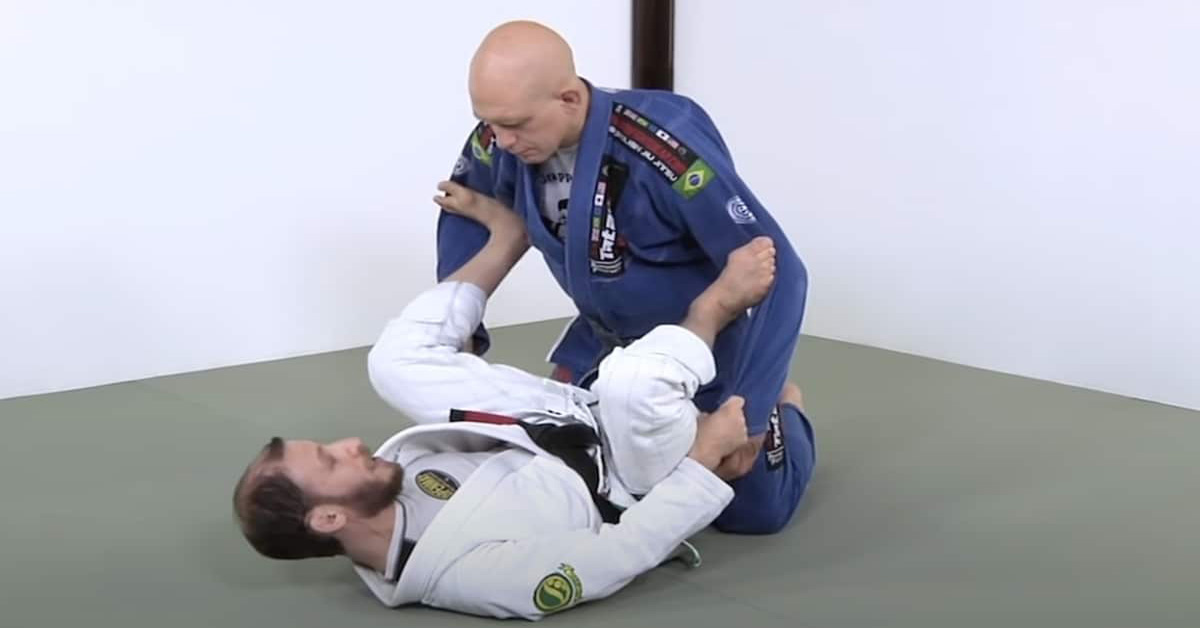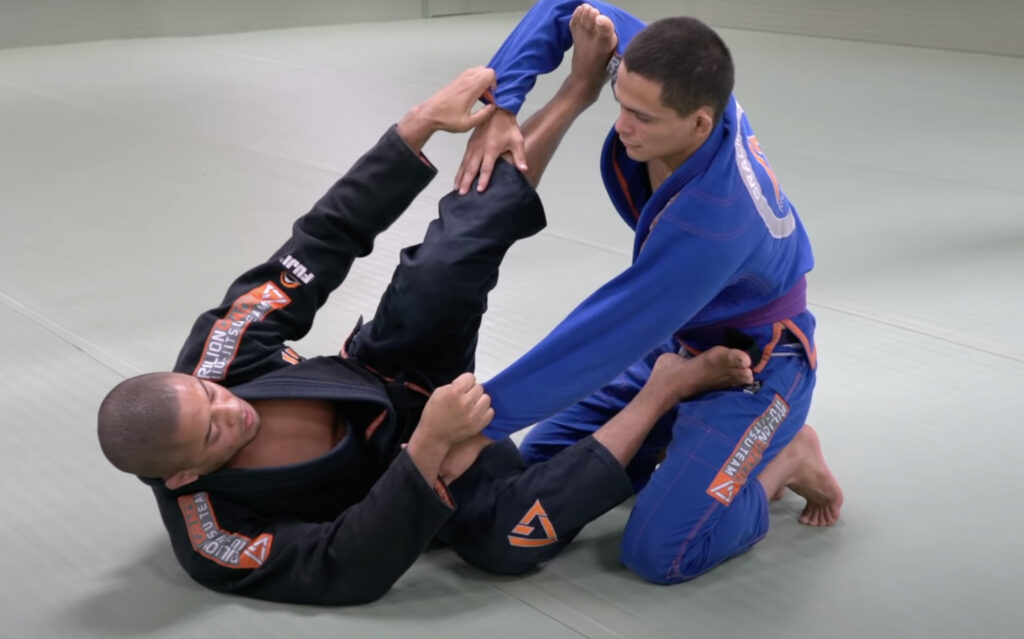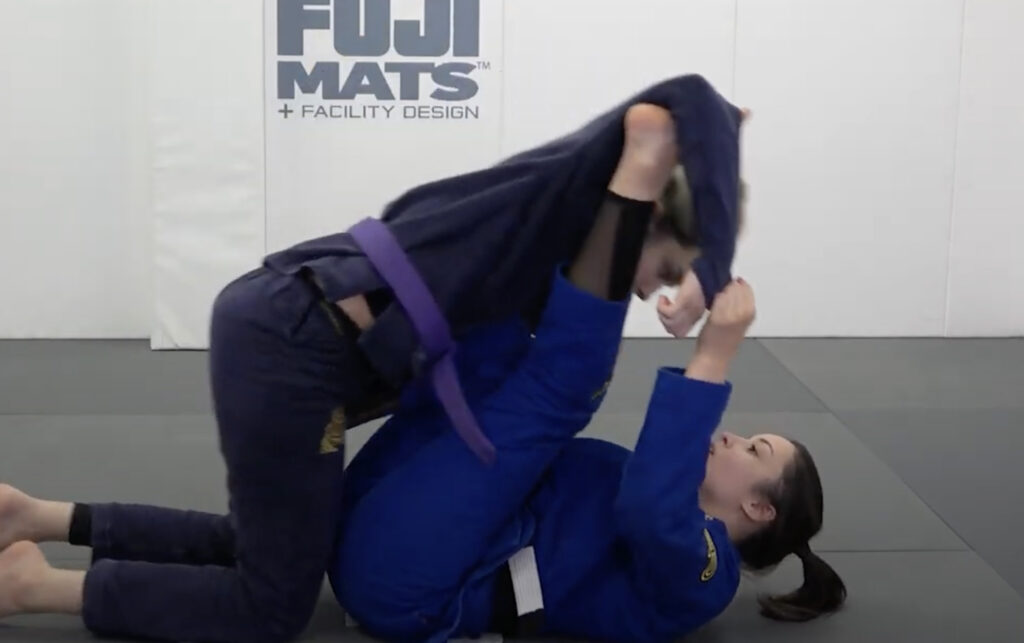Spider Guard – BJJ Technique

Today in Gi Jiu Jitsu it is all about the open guard. There are numerous evolutions of open guard and one of the most successful has been spider guard.
The spider guard has been used by countless world champion guard players since coming on to the scene. Revolutionizing Jiu Jitsu and inspiring numerous techniques.
Here is everything you need to know about the spider guard. We’ll tell you a little of the guard’s history and then detail some great techniques from the position. Also giving you important tips to help you improve your spider guard game.
Who created the spider guard?
Spider guard wasn’t something just one person came up with. It was a natural progression that started during the 80s when open guard began to be utilized.
Kosen Judo used variations of spider decades before, but Jiu Jitsu was really where the guard would develop. Smaller Brazilian guard players in the 1980s realized that they couldn’t hold stronger grapplers in their closed guard.
They had to tweak their games and began using sleeve grips placing their feet on their opponent’s biceps. Doing this gave them control over their opponent’s and open up sweep and submission opportunities.
From then on guarda aranha(spider guard ) started to take off. Today it is a must know guard with countless variations that are still being developed.
How does the spider guard work?
The guard got its name, because it looks like a spider weaving its web. Basic spider guard is where you have double sleeve grips with your feet placed in the crooks of your opponent’s arms.
This control gives you control over your opponent’s movements allowing you to push and pull them. Finding where the base is weak to set up your sweep or submission.
You’re basically weaving a web of attacks for your opponent to fall into.
Spider guard scissor sweep
Starting from a closed guard when your opponent is sitting, start the set up by getting double sleeve grips. Use the sleeve grips to escape to your side and put your feet on your opponent’s hips.
From here, you take one of your hands and place it on your opponent’s bicep and kick it up to the ceiling. At the same time, you pull the arm with your sleeve grip to create tension on their arm.
You’re also going to pull the other sleeve grip towards you as you get on your side. Then you create tension with that grip by kicking forward on your opponent’s hip.
By pushing on your opponent, they are going to want to drive forward, which will put them right into the sweep. As they come forward, take your foot off their hip, place it next to their knee, and go into your scissor sweep.
Or if they don’t come forward, you can pull them forward into your scissor sweep.
Basic standing sweep from spider guard

Here is a basic spider guard sweep you need to know whenever your opponent is standing. When you have a double bicep control or one foot on the hip, you can’t stay here for long.
Your opponent will either go into a leg drag or pressure pass. So you’re going to keep pressure on their arm and kick their arm upward.
Then you’re going to switch your other leg and place your shin across your opponent’s hip. Next pull your opponent down as you grab your opponent’s far pant leg.
In one motion, do these movements together to take your opponent up and over for the sweep. Landing in the knee on belly position.
The last two techniques are demonstrated in this video along with one more sweep.
Spider guard balloon sweep

The balloon sweep from spider guard is super effective and easy to pull off. Start by getting your sleeve grip and bicep control on one of your opponent’s arms.
Then you take your other leg and hook it under your opponent’s body and also grab a collar grip. Push your opponent back using your bicep control.
When they come back forward, scoot your hips under their body and use your grips to roll them forward.
Spider guard back sweep
Here’s a really simple back sweep from the spider guard. Start off in double sleeve and bicep control with your opponent standing over you.
You’re going to take one of your feet off your opponent’s biceps and place it on the ground between their legs. As soon as you plant your foot on the mat, use your sleeve grips to bring your opponent forward.
Naturally, your opponent will brace to stop from falling over. When they do this, bring your foot back up to your opponent’s hip, grab their legs, and kick them backwards.
A very basic sweep mixed in with the spider guard.
Spider/DLR scissor sweep
There’s a really simple scissor sweep you can get off of a Spider/DLR guard variation. As you attempt spider guard on your opponent, they bring a knee up and press forward to defend.
When they do this, you’re going to keep one foot on their bicep and hook your other foot behind their knee. You’re now in a spider/De La Riva guard variation.
Since you have their leg controlled and leg hooked, they can base out to defend on that side. So, what you do is drive their arm up with your bicep control and throw your weight towards your DLR hook.
This momentum knocks your opponent over and you come up on top to complete the sweep.
Spider guard triangle
One of the most effective submissions from the spider guard is a triangle choke. Start by getting your sleeve and bicep controls and kick one arm up.
You then move your other leg to your opponent’s hip as you pull their arm into you. Now your opponent is completely stretched out with both arms going in different directions.
To get into the triangle kick the leg pushing on their bicep off as you pull their other arm forward.
Then chop your leg down on your opponent’s neck and lock in your triangle choke.
Spider guard armbar
Here is a technique to hit an armbar from the spider guard. It starts with your opponent on their knees and you’re holding spider guard with your feet on their bicep and hip.
Transfer your foot on their hip and place your foot across your opponent’s neck. On the same side you have bicep control.
In one swift motion, you’re going to kick off your bicep control and pull your opponent’s arm towards your face. Then throw that leg around their head and take the armbar.
Omoplata from spider guard
When your opponent is standing up in your spider guard, you can set up a slick omoplata. Start by getting on your side, placing your foot on theirs with sleeve and collar grips on the same side. Your other foot is placed on your opponent’s bicep to keep them away.
Use the collar and sleeve grips to pull your opponent forward as you push away on your opponent’s shoulder. Doing these movements makes your opponent go sideways and expose their near shoulder.
From here, take your foot off your opponent’s hip and hook it around their shoulder. Then kick your leg forward to take your opponent down and go into your omoplata finish.
Tips to remember when playing spider guard
Spider guard is a phenomenal guard to use, but there’s important details you can’t forget. Here are important tips to remember when playing spider guard.
- Sleeve grips: Be sure to roll your opponent’s sleeves back and use 4 finger grips in their sleeves. These are the best grips to use when using spider guard.
- Feet placement: With traditional spider guard, your feet have to be placed at the crooks of your opponent’s arms. This enables you to get the most tension and control on their arms.
- Constant tension: You have to keep constant tension on your opponent with your legs. Once you lose that tension, they can easily pass your guard.
- Head up: Never lay back and put your head on the mat when playing spider. You have to keep your head up and be constantly active.
- Get on your side: In order to get the angles when playing spider guard, you have to turn on your sides. If you lay flat on your back you won’t get the angles and will get your guard passed.
- Bridging: In order to do basically do almost any submission in spider guard, you must bridge your hips up into your opponent.






